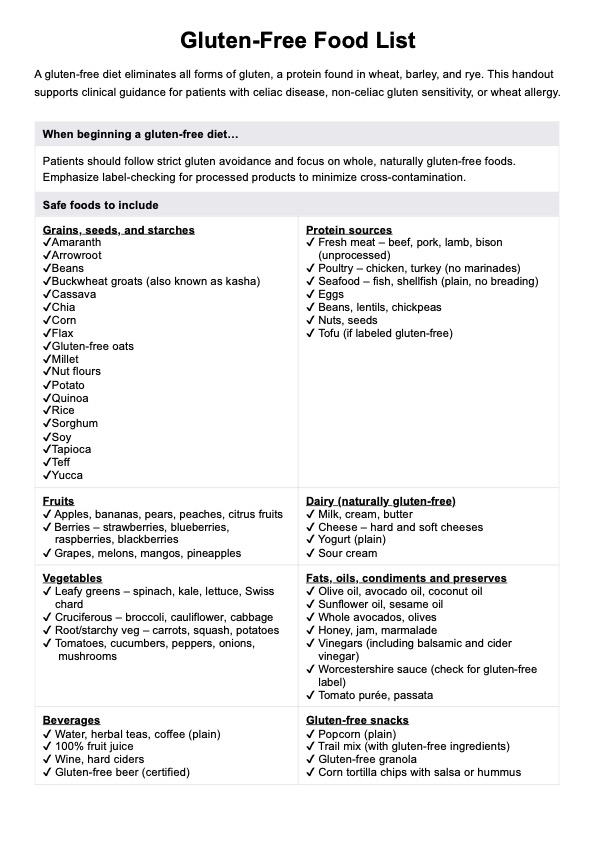Gluten-free foods include naturally gluten-free items such as fruits, vegetables, fresh meats, eggs, legumes, and gluten-free grains like rice, quinoa, and corn. Certified gluten-free products, including some flour, breads, and snacks, are also safe when labeled appropriately.

Gluten Free Food
Access Carepatron's comprehensive Gluten-Free Food List handout to support dietary guidance and help patients manage gluten-free nutrition effectively.
Gluten Free Food Template
Commonly asked questions
Do not eat foods containing wheat, barley, rye, and their derivatives—such as pasta, bread, cereal, and baked goods made with wheat flour. Processed items with hidden gluten, including soy sauce, barley malt, and some soups or processed meats, must also be avoided unless labeled gluten-free.
Typical gluten-free meals may include grilled chicken with vegetables and rice, quinoa salad with legumes, or eggs with sautéed spinach and potato flour pancakes. These meals focus on naturally gluten-free ingredients while avoiding added gluten-containing ingredients.
EHR and practice management software
Get started for free
*No credit card required
Free
$0/usd
Unlimited clients
Telehealth
1GB of storage
Client portal text
Automated billing and online payments











